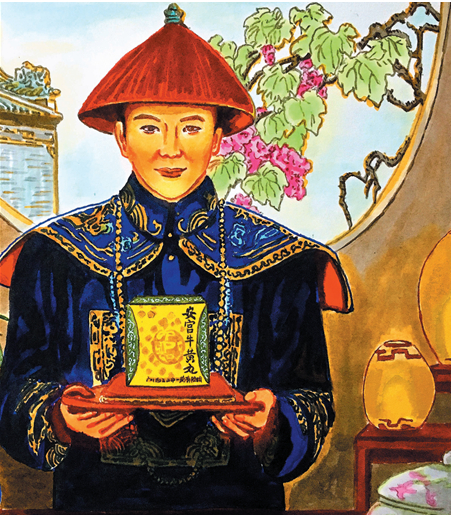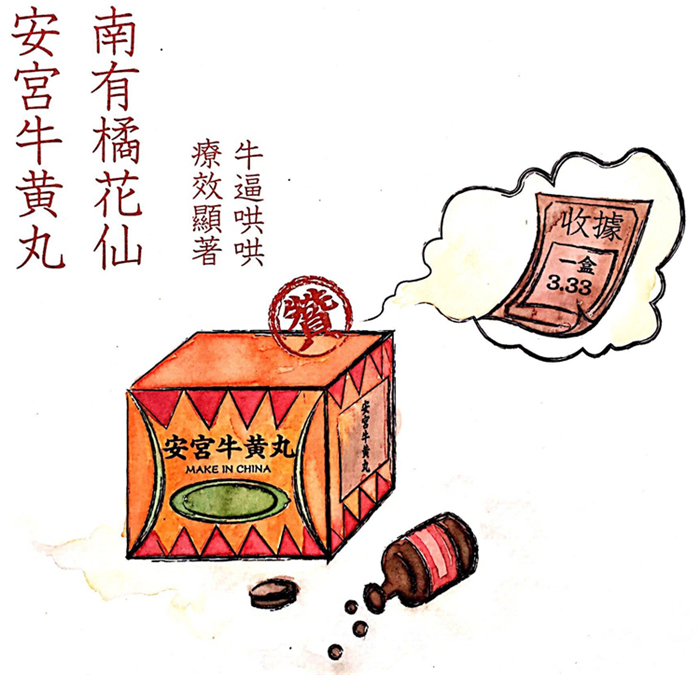Angong Niuhuang Pill as the Effective Medicine for Plagues
2018-05-31 17:19:40 GPHL GPHL
For ancient people, plague symbolized death. Several big scale plagues ever broke out in the ancient western countries, which caused devastating shock in these places and even directly resulted in national ruin. Throughout Chinese history, there were more than 700 large plagues simply from history records. However, due to Chinese medicine as their trump card, Chinese people were not beat down, neither did mass people die. Chinese people used their own wisdom to repel plagues time after time and saved themselves from disaster. Guangdong is in the tropical climate area suitable for the growth and spread of bacteria, where plagues frequently happen. Since Angong Niuhuang Pill came out, the harm of plagues has been greatly reduced.
In Qing Dynasty Xianfeng 8 (AD 1858), Lingnan celebrated pharmacy Juhua Xianguan succeeded in studying and developing Angong Niuhuang Pill according to Differentiation and Treatment of Epidemic Febrile Diseases.
The pharmacy was good at "curing emergency immediately and saving critical patient in time", and so it had the reputation that "Juhua is famous in South China for its Angong Niuhuang Pill" in the late Qing Dynasty and the early Republic period. However, since the materials of Angong Niuhuang Pill were so expensive, including cow-bezoar, musk, rhinoceros horn and pearl, common family hardly had the ability to afford the medicine. So if someone had owned it, he would treasure it as "family heirloom" for a rainy day.

The brand "Xian Ju" had been used by Juhua Xianguan from Qing Dynasty to 1949. During joint private-state operation in 1959, Juhua Xianguan and Ma Bai Liang Pharmacy, century-old pharmacies both skilled in producing Angong Niuhuang Pill, merged into one company which aggregated advantages of their prescriptions and developed into nowadays "Baiyunshan Zhongyi" Angong Niuhuang Pill of Guangzhou Baiyunshan Zhongyi Pharmaceutical Company. In decades, even though the brand had been changed into "Mazi", "Xianju", "Guangzhong", the production of Angong Niuhuang Pill have never been over and always gained certifications.
In Guangzhou, the elders over the age 50 had the strong impression on Angong Niuhuang Pill in 1970s. A box of Angong Niuhuang Pill bought in 1977 has been treasured in Baiyunshan Zhongyi Pharmaceutical Company Archive, with the RMB 3.33 yuan receipt. The citizen who donated the medicine said that his income was just 7 to 8 yuan per month at that time and he needed to use lots of connections to buy it. So you can see how popular Angong Niuhuang Pill was in Guangzhou, and it is best known for the curative effect.
In 1956, the serious outbreak of Japanese encephalitis occurred in Beijing and Hebei. Chairman Mao received doctors' advices and instructed to treat the disease through Angong Niuhuang Pill. Then the epidemic was effectively controlled, which aroused a national sensation. In 2003, when SARS heavily hit China, Sever Acute Respiratory Syndrome (SARS) Chinese Medicine Clinic Guide, issued by the State Administration of Traditional Chinese Medicine, recommended using Angong Niuhuang Pill. During the H1N1 flu pandemic in 2009, The Ministry of Health recommended using Angong Niuhuang Pill to treat the H1N1 flu pandemic which is toxin congesting Qi and nutrient according to Traditional Chinese Medicine Type of syndromes. For H7N9 flu pandemic recently, Angong Niuhuang Pill was also recommended by National Health and Family Planning Commision of the People's Republic of China.


